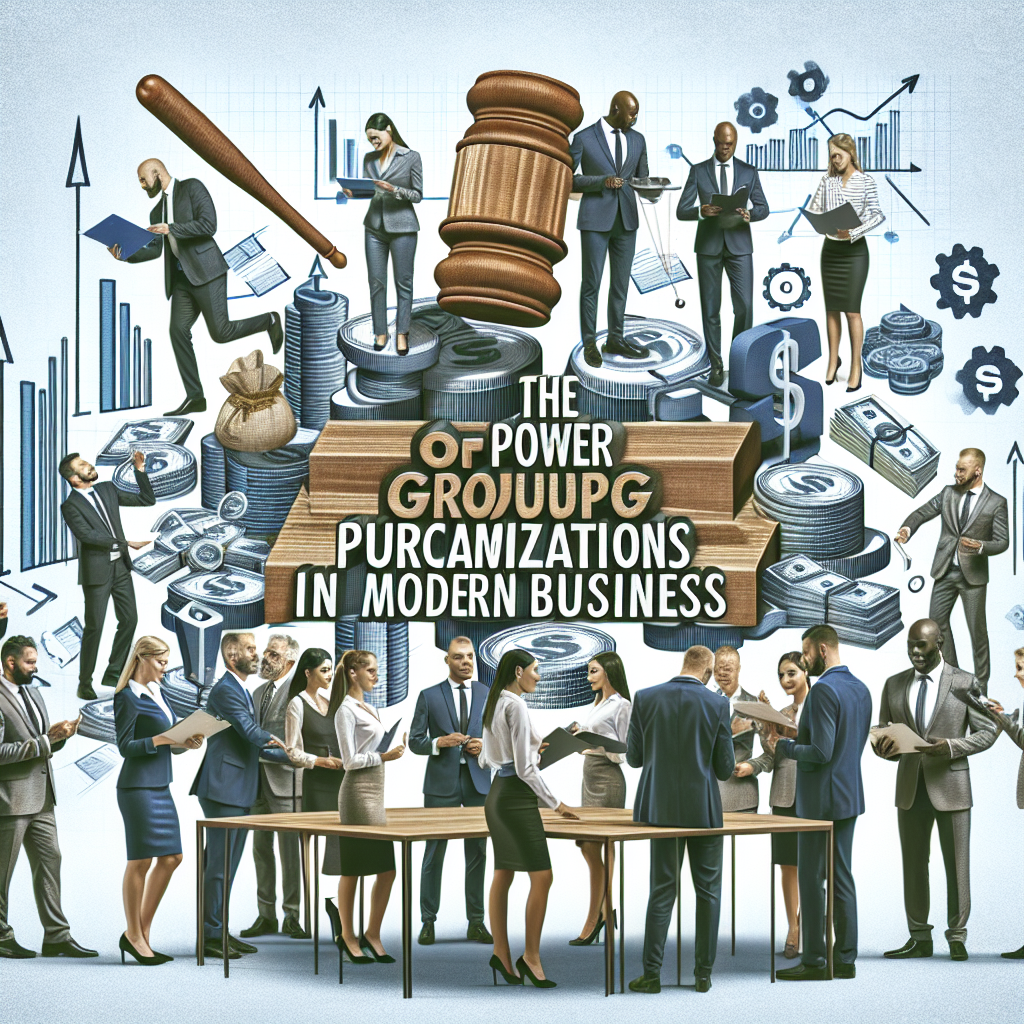Introduction
Have you ever wondered where all those seemingly small expenses in a company go? That’s indirect spend. Unlike direct spend, which involves purchasing raw materials and goods directly tied to production, indirect spend refers to the costs incurred for goods and services that support day-to-day operations. Think of office supplies, utilities, and even that quirky teddy bear your team bought for the annual charity event.
Understanding and managing indirect expenditures is crucial for organizations. Here’s why:
- It enhances transparency around where funds are allocated.
- It allows for better budgeting and cost control.
- It helps in identifying opportunities for cost savings.
Effective management of indirect spend can significantly impact organizational efficiency. By optimizing these expenditures, companies can free up resources for more strategic initiatives, reduce wasteful spending, and ultimately improve their bottom line. A well-structured indirect spend strategy ensures that every dollar spent is accounted for, contributing to smarter decision-making and healthier financial health.
Understanding Indirect Spend
Indirect spend, sometimes referred to as non-production procurement, encompasses all the purchases an organization makes that are not directly tied to the production of its primary products or services. This type of spending plays a crucial role in maintaining day-to-day operations and ensuring smooth business processes.
Definition and Role in Procurement Processes
Indirect spend includes expenses such as office supplies, utilities, marketing costs, outsourced services, and employee-related expenses. These expenditures are essential for supporting the infrastructure of a company but do not contribute directly to the manufacturing of goods or delivery of core services.
For instance, a toy manufacturer might need to purchase stuffing fabric for making teddy bears. This fabric is considered direct spend because it is integral to the final product. On the other hand, purchasing computers for the office staff falls under indirect spend since it supports operations but doesn’t become part of the toy itself.
Differences Between Direct and Indirect Spending
Differentiating direct from indirect spending is key to understanding their respective impacts on a business:
- Direct Spend: These are costs directly associated with the production process. For example:
- A toy company buying plastic materials for toy parts.
- An automotive manufacturer purchasing steel for car frames.
- Indirect Spend: These costs support business operations without being part of the final product. Examples include:
- Office supplies like laptops and stationery.
- Utilities such as electricity and water.
- Services like IT support or cleaning services.
In various industries, these distinctions manifest differently. For example:
- Retail Industry: Direct spend might include inventory purchases (clothing items), while indirect spend covers store fixtures and marketing campaigns.
- Healthcare Sector: Direct spend involves medical supplies (syringes), whereas indirect spend includes administrative software and janitorial services.
Understanding these differences helps businesses manage their procurement processes more effectively, ensuring resources are allocated appropriately across both direct and indirect expenditures. By recognizing the nuances between them, organizations can implement tailored strategies that enhance overall efficiency and cost-effectiveness.
Common Categories of Indirect Spend
When exploring indirect spending, it’s important to understand the different categories that make up these expenses. Each category is crucial for the daily functioning of a business but often goes unnoticed until it’s time to review the finances. Here are some common categories:
1. Office Supplies
This includes essential items such as laptops, printers, and stationery. While these may seem insignificant individually, they collectively contribute to a large portion of indirect spending. Running an office without basic supplies like paperclips or sticky notes would be chaotic.
2. Utilities
Utilities encompass necessary services like electricity, water, and gas. These are vital for keeping operations running smoothly—without them, productivity would come to a standstill.
3. Marketing and Advertising Costs
Expenses in this category involve hiring PR agencies, conducting ad campaigns, and other promotional activities. Effective marketing is crucial for brand visibility but can quickly become expensive if not managed properly.
4. Outsourced Services
In some cases, it makes more financial sense to hire external consultants or IT support instead of having an in-house team. Outsourced services provide specialized expertise without the long-term commitment of full-time employees.
5. Employee Training and Travel Expenses
Investing in your team’s development through training programs or covering travel costs for business trips falls under this category. These expenses are essential for fostering growth and ensuring employees have the skills needed to succeed.
Understanding these categories helps organizations identify where their money is going and find opportunities to cut costs. By closely monitoring these spending areas, companies can optimize their budgets and use resources more effectively.
Each of these categories represents areas where businesses commonly incur expenses including office supplies, utilities, marketing costs, outsourced services, and employee-related expenditures. Identifying these helps in crafting strategies for better financial management and operational efficiency.
The Importance of Effectively Managing Indirect Spending
Understanding and managing indirect spending is crucial for organizational efficiency. Unlike direct spend, which is tied to the production of goods and services, indirect spend includes a variety of expenses that support day-to-day operations. Think about it: while direct spends money on raw materials or components, indirect spend covers office supplies, utilities, outsourced services, and more.
Effective management of these expenditures can lead to significant cost reductions. Imagine your company spends a small fortune on teddy bears for promotional giveaways each year. Without proper oversight, such seemingly minor expenses can pile up, eating into your total expenses and reducing profitability.
Here’s why prioritizing managing indirect spend is essential:
- Cost Management: Keeping track of where every penny goes helps in identifying unnecessary expenditures. This control allows for reallocating resources to more critical areas.
- Enhanced Performance: Streamlined processes mean less waste and more efficient use of resources, leading to better overall performance.
- Budget Accuracy: When you have a clear picture of your indirect spends, it’s easier to forecast future expenses accurately.
- Supplier Relationships: Effective management often involves consolidating suppliers, which can result in better rates and improved service quality.
Organizations that pay close attention to their indirect spending habits stand to gain significantly in terms of cost savings and operational efficiency.
Overcoming Challenges in Indirect Spend Management
Navigating the complexities of indirect spend can be quite tricky. Organizations often face several obstacles that can derail their efforts to manage these expenditures effectively. Let’s dive into some common procurement challenges and ways to tackle them.
Sporadic Purchasing Patterns
One of the most prevalent issues is sporadic purchasing patterns across different departments. When each department makes purchases independently, it becomes challenging to track and consolidate spending.
Example: Imagine the marketing department buying promotional items without consulting procurement, while HR orders training materials on an ad-hoc basis. This disjointed approach leads to inefficiencies and missed opportunities for bulk discounts.
Maverick Spending
Maverick spending occurs when employees bypass approved purchasing channels, often resulting in higher costs and less favorable terms.
Personal anecdote: Picture this – an IT manager finds a great deal on software from a non-approved vendor. While the initial cost seems lower, hidden fees and lack of support end up costing more in the long run. It’s like finding a teddy bear on sale, only to discover it’s missing an ear.
Limited Supplier Relationship Management
Limited interaction with suppliers can lead to suboptimal pricing and service levels. Strong relationships help secure better deals and more reliable services.
Insight: Think about your favorite coffee shop – they know your order by heart and often give you a little extra love in your cup. Building similar rapport with suppliers ensures priority treatment and potentially better rates.
Addressing These Challenges
- Centralize Procurement Processes: Implement systems that allow all departments to make purchases through a centralized platform. This approach not only streamlines spending but also provides better visibility into overall expenditures.
- Enforce Compliance: Develop strict policies against maverick spending and ensure all employees are aware of approved channels.
- Enhance Supplier Relationships: Regularly engage with suppliers, seek feedback, and explore opportunities for mutual growth.
By addressing these hurdles head-on, organizations can significantly improve their indirect spend management, leading to substantial cost savings and operational efficiency.
Strategies for Optimizing Indirect Procurement Processes
When it comes to boosting the efficiency and effectiveness of indirect procurement, several best practices can make a world of difference. Adopting these strategies not only helps in managing costs but also ensures a streamlined procurement process.
Streamlining Procurement Processes
A straightforward yet powerful approach is to streamline your procurement processes. This involves:
- Standardizing Procedures: Creating uniform procedures across departments can minimize errors and ensure consistent quality.
- Centralizing Procurement: Having a centralized team handle all procurement activities can help in better coordination and control.
- Implementing Clear Policies: Establishing clear policies for purchasing can prevent maverick spending and ensure compliance with organizational goals.
Consolidating Suppliers
Another effective strategy is supplier consolidation. By reducing the number of suppliers, you can:
- Negotiate Better Rates: Larger orders from fewer suppliers often lead to bulk discounts and more favorable terms.
- Strengthen Relationships: Building stronger relationships with key suppliers can result in better service levels and enhanced reliability.
- Simplify Management: Managing fewer supplier relationships reduces administrative overhead and makes monitoring easier.
Leveraging Technology Solutions
Technology plays a crucial role in modern procurement strategies. Leveraging the right tools can transform your indirect procurement processes:
- Spend Analysis Tools: These tools help you track spending patterns and identify areas for cost savings.
- Procurement Software: Comprehensive software solutions can automate many aspects of procurement, from order processing to invoice management.
- Supplier Relationship Management (SRM) Systems: SRM systems facilitate better communication and collaboration with suppliers.
Example Scenario
Consider a mid-sized manufacturing company that frequently purchases office supplies, marketing services, and travel arrangements. By implementing standardized procedures and centralizing their procurement team, they ensure every purchase aligns with their broader business objectives. They also consolidate their suppliers, opting for a single vendor for all office supplies. By negotiating larger orders, they secure significant discounts. Finally, they use spend analysis tools to monitor expenses closely, identifying any deviations from their budget swiftly.
For tailored solutions that can help your organization optimize its indirect spending effectively, contact us today!
Building Strong Relationships with Indirect Suppliers
When it comes to supplier management, nurturing positive relationships with indirect suppliers can lead to numerous benefits. These relationships are essential for achieving favorable pricing and service outcomes.
Why is this important?
- Favorable Pricing: Building strong ties with suppliers often results in better price negotiations. Suppliers might offer discounts or special rates to loyal clients, which means lower expenses for your organization.
- Reliable Service: A good relationship ensures that your suppliers prioritize your needs. This means timely deliveries and high-quality services, which are critical for maintaining smooth operations.
How to foster these relationships:
- Communication: Regular and open communication is key. Keep your suppliers informed about your needs and expectations.
- Collaboration: Work together on projects and share feedback. This collaborative approach helps in understanding each other’s capabilities and limitations.
- Consistency: Consistent orders and timely payments build trust. Suppliers value reliability just as much as you do.
Real-world example:
Imagine a company that regularly purchases office supplies like laptops and stationery from the same supplier. By maintaining a positive relationship, they may receive bulk discounts or expedited shipping, reducing both costs and potential downtime.
Strong supplier relationships translate into cost savings and efficient operations—a win-win scenario.
Hubzone Depot’s Approach to Indirect Procurement Excellence
Hubzone Depot, a HUBZone certified business and a proud women-owned business, is a leader in providing exceptional indirect procurement services. The company’s mission and values are closely connected to the efficient management of indirect spending, ensuring that every client receives top-notch service and substantial cost savings.
Commitment to Transparency and Integrity
At Hubzone Depot, transparency and integrity are not just empty words; they are the core principles guiding all business activities. Clients benefit from:
- Transparent Reporting: Detailed insights into spending patterns help organizations understand where their money is going.
- Four-Stage Method: This approach ensures value and time savings through careful assessment and strategic planning.
- Ongoing Account Management: Continuous support to adapt and improve procurement strategies as needs change.
Strategic Solutions for Expense Optimization
Hubzone Depot offers a variety of strategic solutions aimed at maximizing expense optimization. These include:
- Indexed Pricing and Caps: To protect clients from market fluctuations, ensuring stable and predictable costs.
- No Long-Term Contracts or Purchase Minimums: Offering flexibility that suits various organizational needs without binding commitments.
- Advanced Monitoring Systems: Utilizing sophisticated technology to track spending, identify savings opportunities, and benchmark against industry standards.
Collaboration with Vendors through Group Purchasing Organization (GPO)
One of Hubzone Depot’s standout features is its collaboration with vendors via a Group Purchasing Organization (GPO). This collaborative effort brings several advantages:
- Bulk Buying Power: Access to exclusive discounts through collective purchasing.
- Streamlined Purchasing Processes: Simplified procurement deliverables that save time and reduce administrative burden.
- High-Quality Products at Competitive Rates: Ensuring that clients receive the best products without breaking the bank.
Hubzone Depot is committed to optimizing indirect spending for organizations of all sizes. By leveraging their extensive industry experience, robust procurement processes, and dedication to excellence, they provide unmatched value in the field of indirect procurement.
Conclusion
Understanding and effectively managing indirect spend is crucial in today’s business landscape. Mismanaged indirect expenditures can lead to inefficiencies, unexpected costs, and strained supplier relationships. By optimizing your organization’s purchasing strategies, you can predict spending more accurately and ensure that every dollar is used wisely.
With Hubzone Depot’s expertise in procurement, you have a partner committed to transparency, integrity, and strategic solutions for expense optimization. Our collaboration with vendors through Group Purchasing Organizations (GPO) enables us to offer competitive rates and high-quality service.
Take action today! For tailored solutions that can help your organization optimize its indirect spending effectively, contact us.
Who We Are
Hubzone Depot LLC is a certified HUBZone small business and Women’s Business Enterprise (WBE). Founded by Jessica S. Presco and located in Burlington, NJ, we specialize in providing office and industrial supplies/services to public sector clients using public funds.
What We Do
We save millions for US organizations by offering exclusive discounts, personalized support, streamlined purchasing processes, bulk buying power, and a steadfast commitment to community engagement.
Resources
Explore our blog for articles on indirect purchasing tips and best practices.
Let’s Connect
For expert guidance and seamless implementation of optimized procurement strategies, reach out to us today!
Your trusted partner in procurement excellence.





